IR Reflectography and Active Thermography on Artworks: The Added Value of the 1.5–3 µm Band
Abstract
:Featured Application
Abstract
1. Introduction
2. Materials and Methods
- SWIR: Short Wave Infrared radiation, only for reflectography measurements. spectral range: 0.9–1.7 (IR-A), measurements performed with a Goodrich SU640SDWH-1.7 RT camera, CMOS InGaAs uncooled sensor and a spatial resolution of 640 × 512.
- MWIR: Mid-wave Infrared radiation. Global spectral range of 1.5–5 (IR-B+C’), measurements performed with FLIR X6540sc camera with a cooled InSb sensor, Noise Equivalent Temperature Difference (NETD) of 20 mK and a spatial resolution of 640 × 512. The IR-C’ measurements are compared with a FLIR Phoenix camera, which is only sensitive in the IR-C’ spectrum:
- –
- reflectography measurements within the spectral range of 1.5–5 (IR-B+C’) with separate filter options:
- *
- 1.615–2.280 ,
- *
- 2.055–2.145 ,
- *
- 2.5–2.7 ,
- *
- 1.5–5 ,
- –
- active thermography measurements within the spectral range of 3–5 (IR-C’).
- MA-rFTIR (macroscopic reflection mode Fourier transform infrared) measurements using a Bruker Alpha FTIR spectrometer (Bruker, Germany), fully described in [14] as benchmark measurement to verify the multi-spectral measurements.
Test Sample Description
3. Results and Discussion
3.1. Mondrian: Underdrawing
IR-B reflectivity:
IR-C’ active thermography:
3.2. Icon: Pigments
Reflectography:
Active thermography:
3.3. Whistler Replica: Canvas
3.4. Marquetries: Wood Structure
4. Conclusions
Acknowledgments
Author Contributions
Conflicts of Interest
References
- Miller, B.F. The Feasibility of using Thermography to Detect Subsurface Voids in Painted Wooden Panels. Bull. Am. Inst. Conserv. 1976, 16, 27–35. [Google Scholar] [CrossRef]
- Daffara, C.; Ambrosini, D.; Di Biase, R.; Fontana, R.; Paoletti, D.; Pezzati, L.; Rossi, S. Imaging data integration for painting diagnostics. Proc. SPIE 2009, 7391, 73910X. [Google Scholar]
- Delaney, J.K.; Thoury, M.; Zeibel, J.G.; Ricciardi, P.; Morales, K.M.; Dooley, K.A. Visible and infrared imaging spectroscopy of paintings and improved reflectography. Herit. Sci. 2016, 4, 6. [Google Scholar] [CrossRef]
- Miller, J.L. Principles of Infrared Technology: A Practical Guide to the State of the Art; Springer: Berlin, Germany, 1994. [Google Scholar]
- Obrutsky, A.; Acosta, D.; Garcia, A.; Scopelliti, J. Non-destructive testing methods used for the study of cultural heritage in Argentina. Insight Non-Destr. Test. Cond. Monit. 2009, 51, 499–503. [Google Scholar] [CrossRef]
- Ambrosini, D.; Daffara, C.; Di Biase, R.; Paoletti, D.; Pezzati, L.; Bellucci, R.; Bettini, F. Integrated reflectography and thermography for wooden paintings diagnostics. J. Cult. Herit. 2010, 11, 196–204. [Google Scholar] [CrossRef]
- Falco, C.M. High-Resolution Infrared Imaging. In Proceedings of the Nature of Light: Light in Nature III, San Diego, CA, USA, 2 August 2010; Volume 7782, p. 778206. [Google Scholar]
- Sfarra, S.; Ibarra-Castanedo, C.; Ambrosini, D.; Paoletti, D.; Bendada, A.; Maldague, X. Integrated approach between pulsed thermography, near-infrared reflectography and sandwich holography for wooden panel paintings advanced monitoring. Russ. J. Nondestruct. Test. 2011, 47, 284–293. [Google Scholar] [CrossRef]
- Daffara, C.; Pezzati, L.; Ambrosini, D.; Paoletti, D.; Di Biase, R.; Mariotti, P.I.; Frosinini, C. Wide-band IR imaging in the NIR-MIR-FIR regions for in situ analysis of frescoes. In Proceedings of the O3A: Optics for Arts, Architecture, and Archaeology III, Munich, Germany, 21 June 2011; Volume 8084, p. 808406. [Google Scholar]
- Crina Anca Sandu, I.; De Sá, M.H.; Pereira, M.C. Ancient ’gilded’ art objects from European cultural heritage: A review on different scales of characterization. Surf. Interface Anal. 2011, 43, 1134–1151. [Google Scholar] [CrossRef]
- Daffara, C.; Ambrosini, D.; Pezzati, L.; Paoletti, D. Thermal Quasi-Reflectography: a new imaging tool in art conservation. Opt. Express 2012, 20, 14746–14753. [Google Scholar] [CrossRef] [PubMed]
- Sfarra, S.; Ibarra-Castanedo, C.; Ambrosini, D.; Paoletti, D.; Bendada, A.; Maldague, X. Discovering the defects in paintings using non-destructive testing (NDT) techniques and passing through measurements of deformation. J. Nondestruct. Eval. 2014, 33, 358–383. [Google Scholar] [CrossRef]
- Alfeld, M.; Broekaert, J.A. Mobile depth profiling and sub-surface imaging techniques for historical paintings—A review. Spectrochim. Acta Part B At. Spectrosc. 2013, 88, 211–230. [Google Scholar] [CrossRef]
- Legrand, S.; Alfeld, M.; Vanmeert, F.; De Nolf, W.; Janssens, K. Macroscopic Fourier transform infrared scanning in reflection mode (MA-rFTIR), a new tool for chemical imaging of cultural heritage artefacts in the mid-infrared range. Analyst 2014, 139, 2489–2498. [Google Scholar] [CrossRef] [PubMed]
- Sfarra, S.; Ibarra-Castanedo, C.; Ridolfi, S.; Cerichelli, G.; Ambrosini, D.; Paoletti, D.; Maldague, X. Holographic Interferometry (HI), Infrared Vision and X-Ray Fluorescence (XRF) spectroscopy for the assessment of painted wooden statues: A new integrated approach. Appl. Phys. A Mater. Sci. Process. 2014, 115, 1041–1056. [Google Scholar] [CrossRef]
- Gavrilov, D.; Maeva, E.; Grube, O.; Vodyanoy, I.; Maev, R. Experimental comparative study of the applicability of infrared techniques for non-destructive evaluation of paintings. J. Am. Inst. Conserv. 2013, 52, 48–60. [Google Scholar] [CrossRef]
- Sfarra, S.; Theodorakeas, P.; Avdelidis, N.P.; Koui, M. Thermographic, ultrasonic and optical methods: A new dimension in veneered wood diagnostics. Russ. J. Nondestruct. Test. 2013, 49, 234–250. [Google Scholar] [CrossRef]
- Paez, G.; Strojnik, M. Spectral interrogation of a several-hundred-years old painting with a broadband IR camera. In Proceedings of the Infrared Remote Sensing and Instrumentation XXI, San Diego, CA, USA, 19 September 2013; Volume 8867, p. 886711. [Google Scholar]
- Bendada, A.; Sfarra, S.; Ibarra-Castanedo, C.; Akhloufi, M.; Caumes, J.; Pradere, C.; Batsale, J.; Maldague, X. Subsurface imaging for panel paintings inspection: A comparative study of the ultraviolet, the visible, the infrared and the terahertz spectra. Opto-Electron. Rev. 2015, 23, 88–99. [Google Scholar] [CrossRef]
- Zhang, H.; Sfarra, S.; Saluja, K.; Peeters, J.; Fleuret, J.; Duan, Y.; Fernandes, H.; Avdelidis, N.; Ibarra-Castanedo, C.; Maldague, X. Non-destructive Investigation of Paintings on Canvas by Continuous Wave Terahertz Imaging and Flash Thermography. J. Nondestruct. Eval. 2017, 36, 34. [Google Scholar] [CrossRef]
- Walmsley, E.; Metzger, C.; Delaney, J.K.; Fletcher, C. Improved visualization of underdrawings with solid-state detectors operating in the infrared. Stud. Conserv. 1994, 39, 217–231. [Google Scholar]
- Van Asperen de Boer, J.R.J. Reflectography of Paintings Using an Infrared Vidicon Television System. Stud. Conserv. 1969, 14, 96–118. [Google Scholar] [CrossRef]
- Gavrilov, D.; Maev, R.; Almond, D.P. A review of imaging methods in analysis of works of art: Thermographic imaging method in art analysis. Can. J. Phys. 2014, 92, 341–364. [Google Scholar] [CrossRef]
- Vollmer, M.; Möllmann, K. Infrared Thermal Imaging: Fundamentals, Research And Applications; Wiley-VCH: Berlin, Germany, 2010. [Google Scholar]
- Chaudhuri, P.; Santra, P.; Yoele, S.; Prakash, A.; Reddy, D.; Lachhvani, L.; Govindarajan, J.; Saxena, Y. Non-destructive evaluation of brazed joints between cooling tube and heat sink by IR thermography and its verification using FE analysis. NDT E Int. 2006, 39, 88–95. [Google Scholar] [CrossRef]
- Jeong, W.; Earls, C.; Philpot, W.; Zehnder, A. Inverse thermographic characterization of optically unresolvable through cracks in thin metal plates. Mech. Syst. Signal Process. 2012, 27, 634–650. [Google Scholar] [CrossRef]
- Susa, M.; Ibarra-Castanedo, C. Pulse thermography applied on a complex structure sample: Comparison and analysis of numerical and experimental results. In Proceedings of the IV Conferencia Panamericana de END, Buenos Aires, Argentina, 22–26 October 2007. [Google Scholar]
- Ibarra-Castanedo, C.; Genest, M.; Piau, J.M.; Guibert, S.; Bendada, A.; Maldague, X.P.V. Active Infrared Thermography Techniques for the Non-destructive Testing of Materials. In Ultrasonic and Advanced Methods for Nondestructive Testing and Material Characterization; Chen, C.H., Ed.; World Scientific Publishing: Singapore, 2007; pp. 325–348. [Google Scholar]
- Giorleo, G.; Meola, C. Comparison between pulsed and modulated thermography in glass–epoxy laminates. NDT E Int. 2002, 35, 287–292. [Google Scholar] [CrossRef]
- Busse, G. Techniques of Infrared Thermography: Part 4. Lock-in thermography. In Nondestructive Handbook, 3rd ed.; ASNT Press: Columbus, OH, USA, 2001; p. 718. [Google Scholar]
- Rajic, N. Principal component thermography. Def. Sci. Technol. 2002. [Google Scholar]
- Klein, M.T.; Ibarra-Castanedo, C.; Maldague, X.P.V.; Bendada, A. A straightforward graphical user interface for basic and advanced signal processing of thermographic infrared sequences. In Proceedings of the Thermosense XXX, Orlando, FA, USA, 17 March 2008; Volume 6939, p. 693914. [Google Scholar]
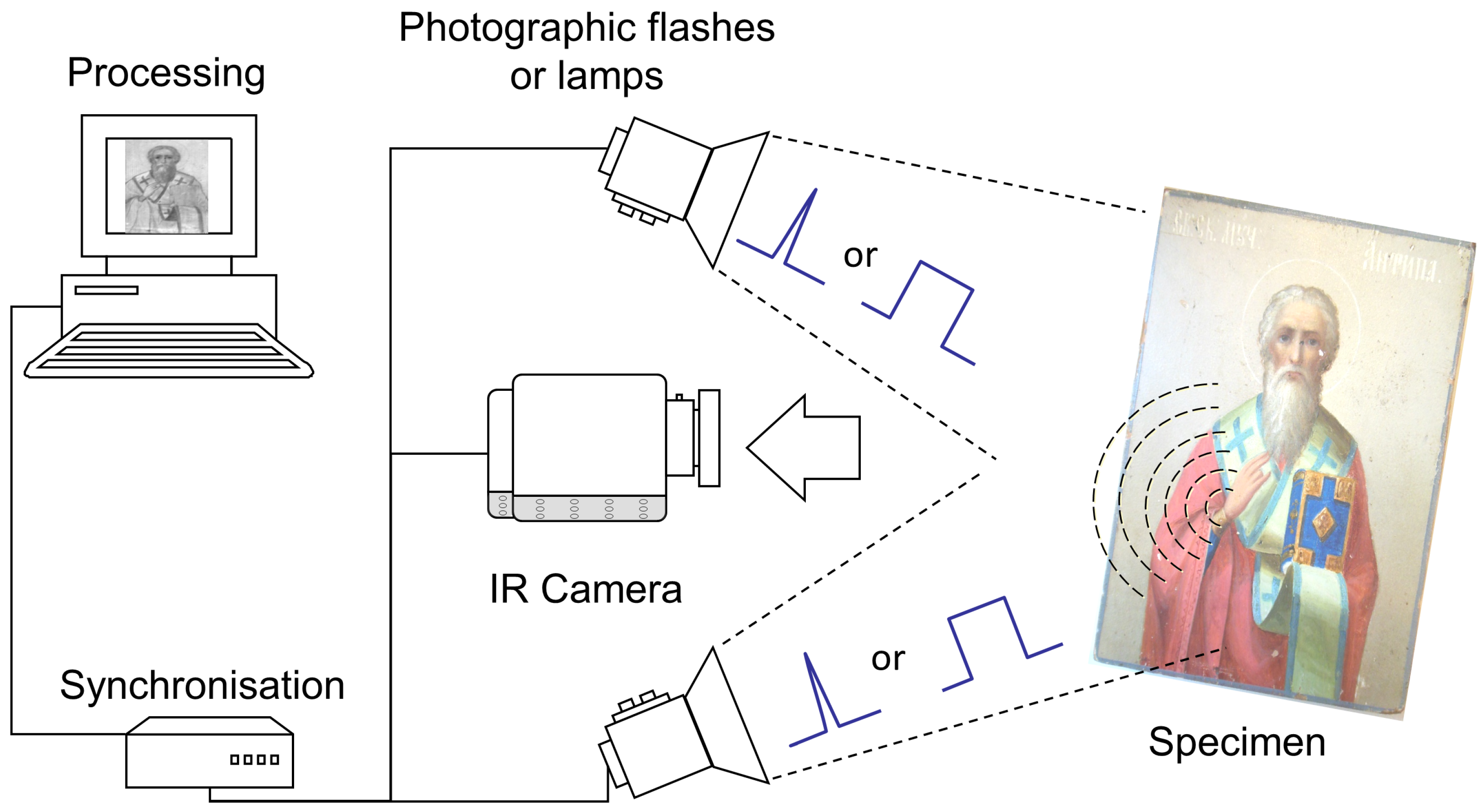
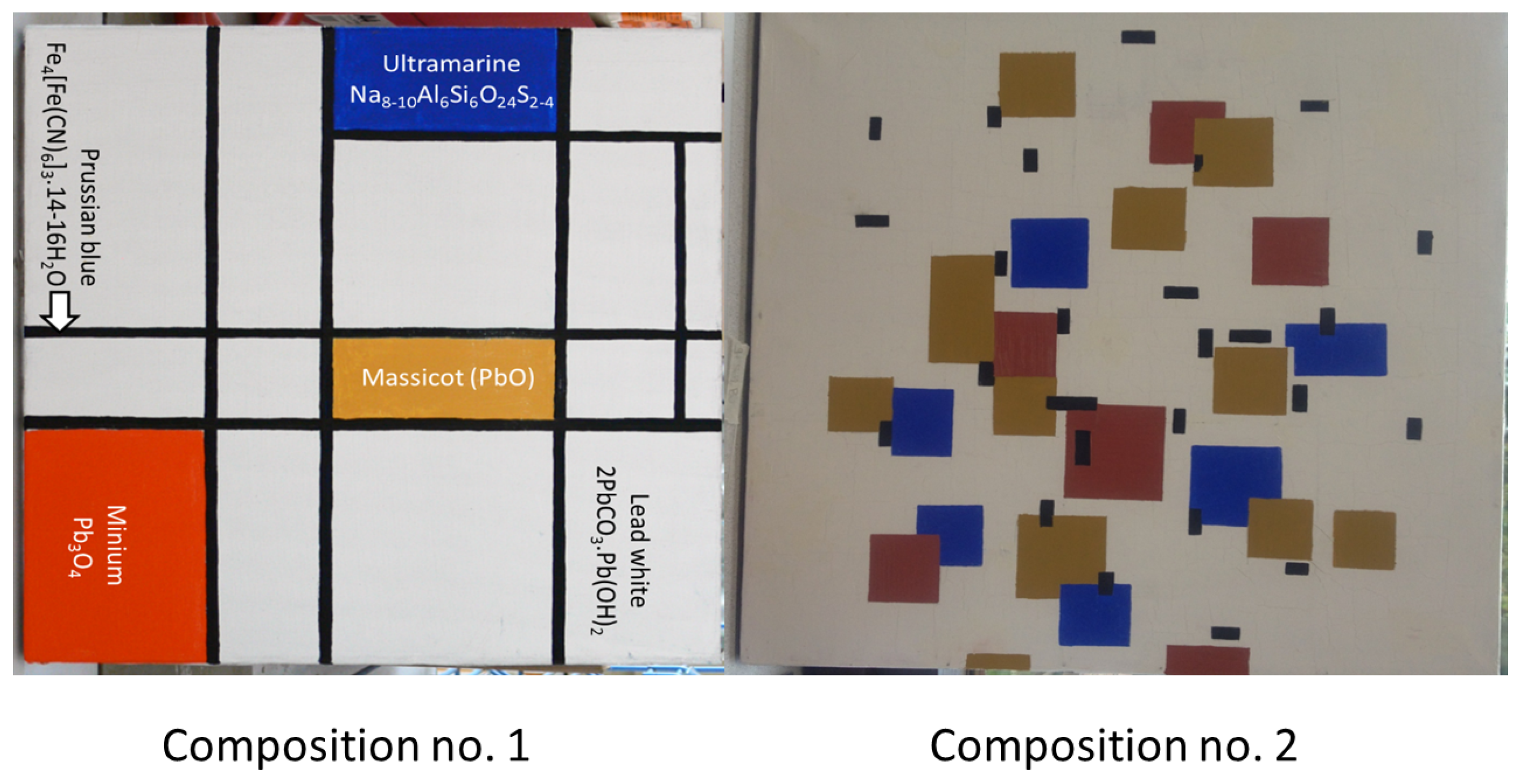
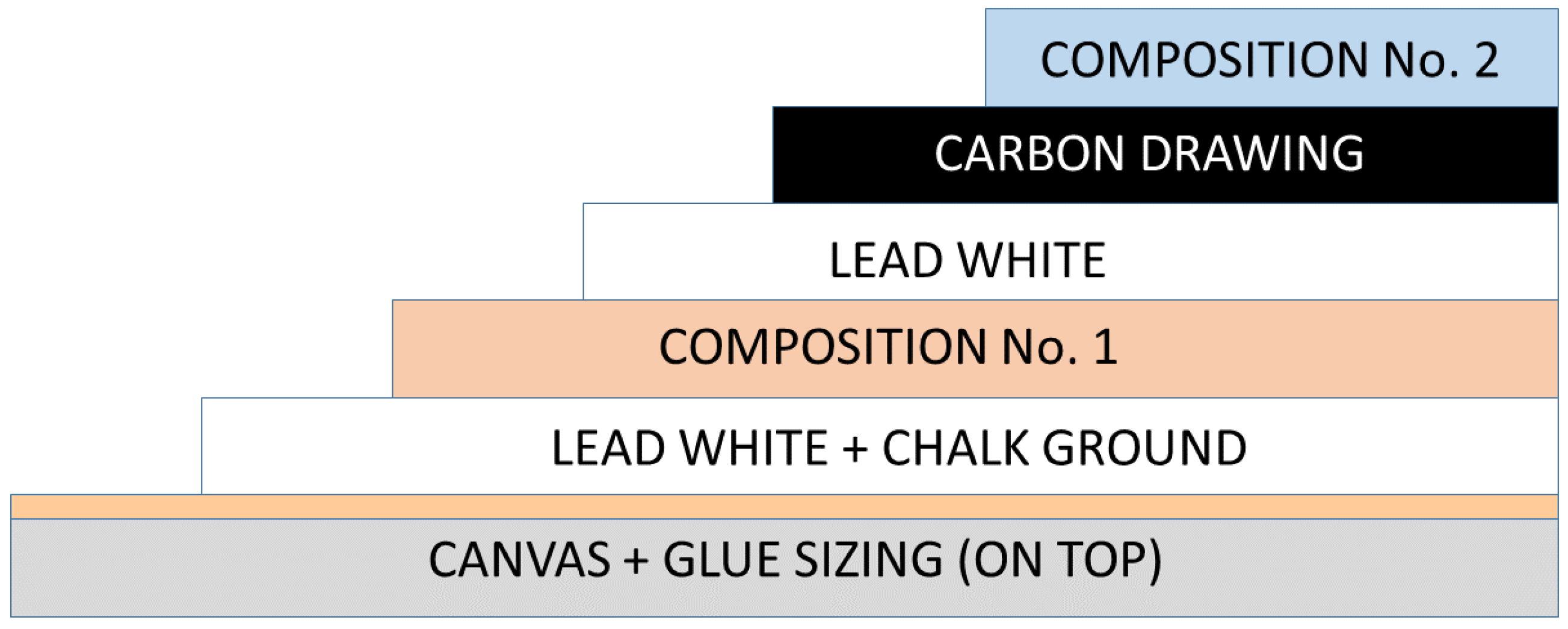
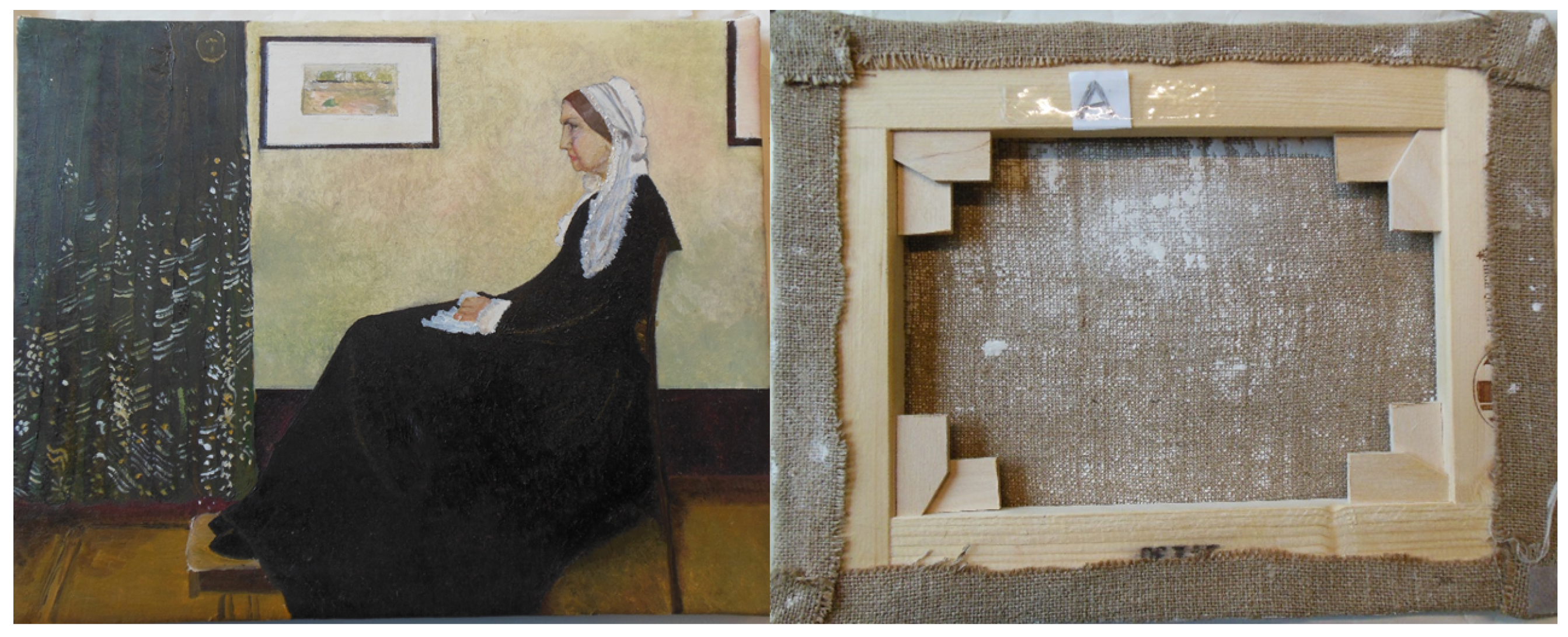
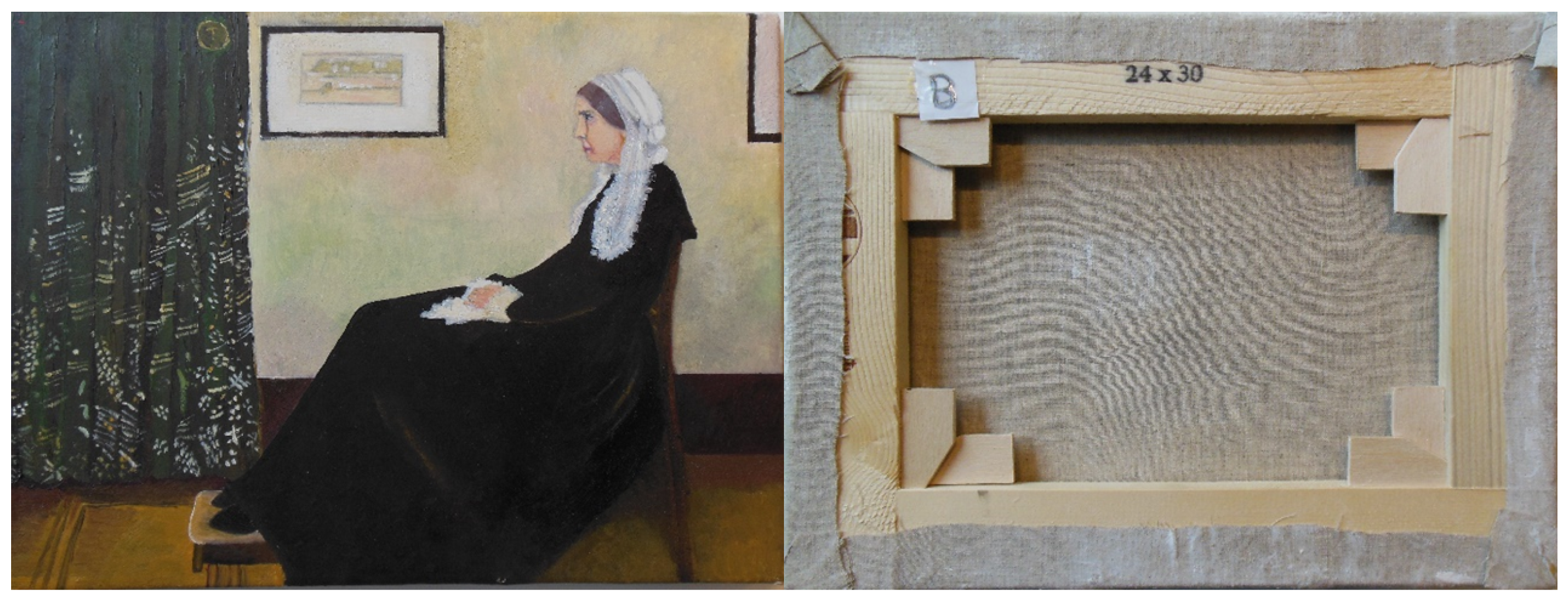
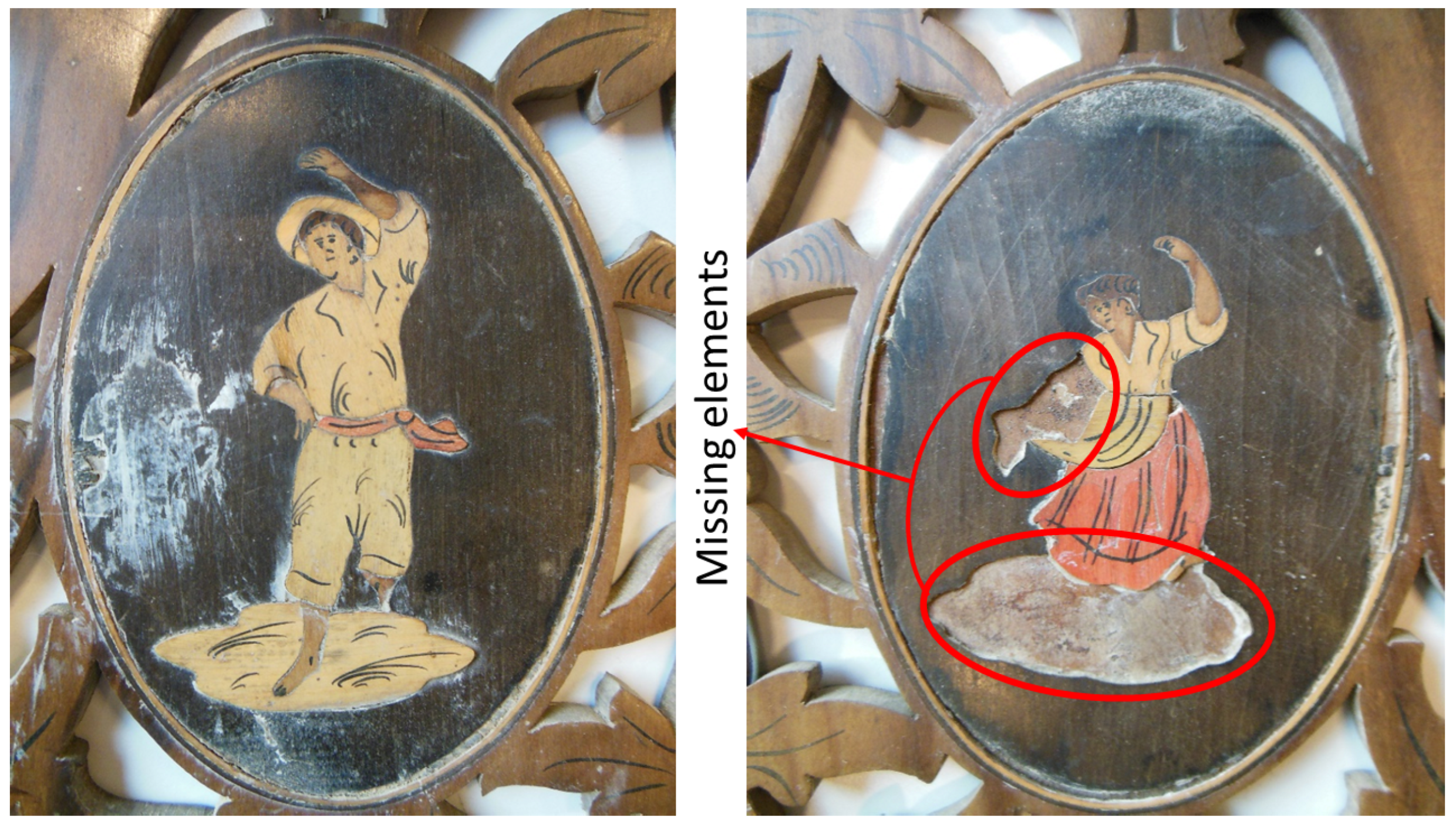
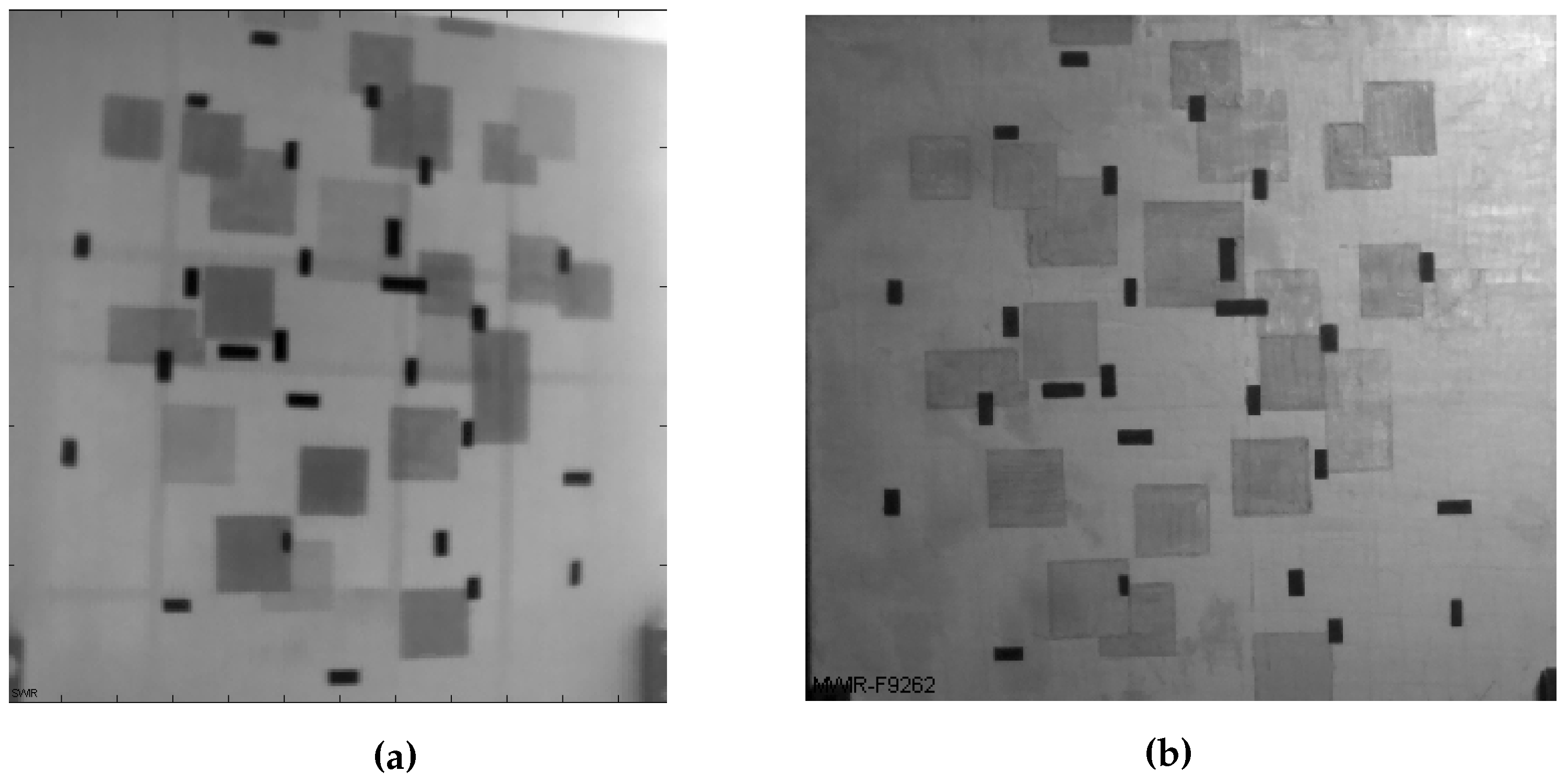
| .42 | .42 |
| (a) | (b) |
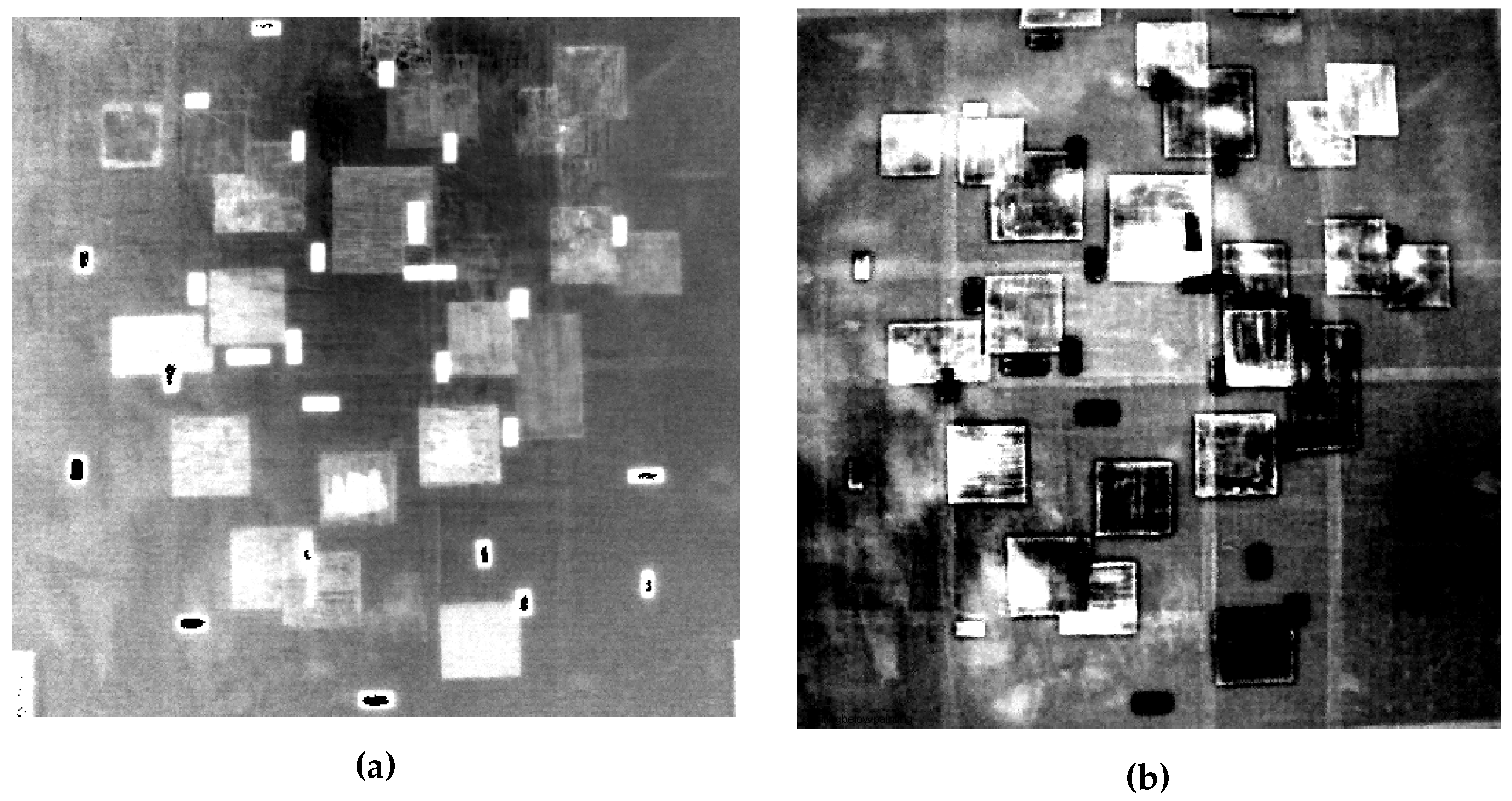
| .43 | .43 |
| (a) | (b) |
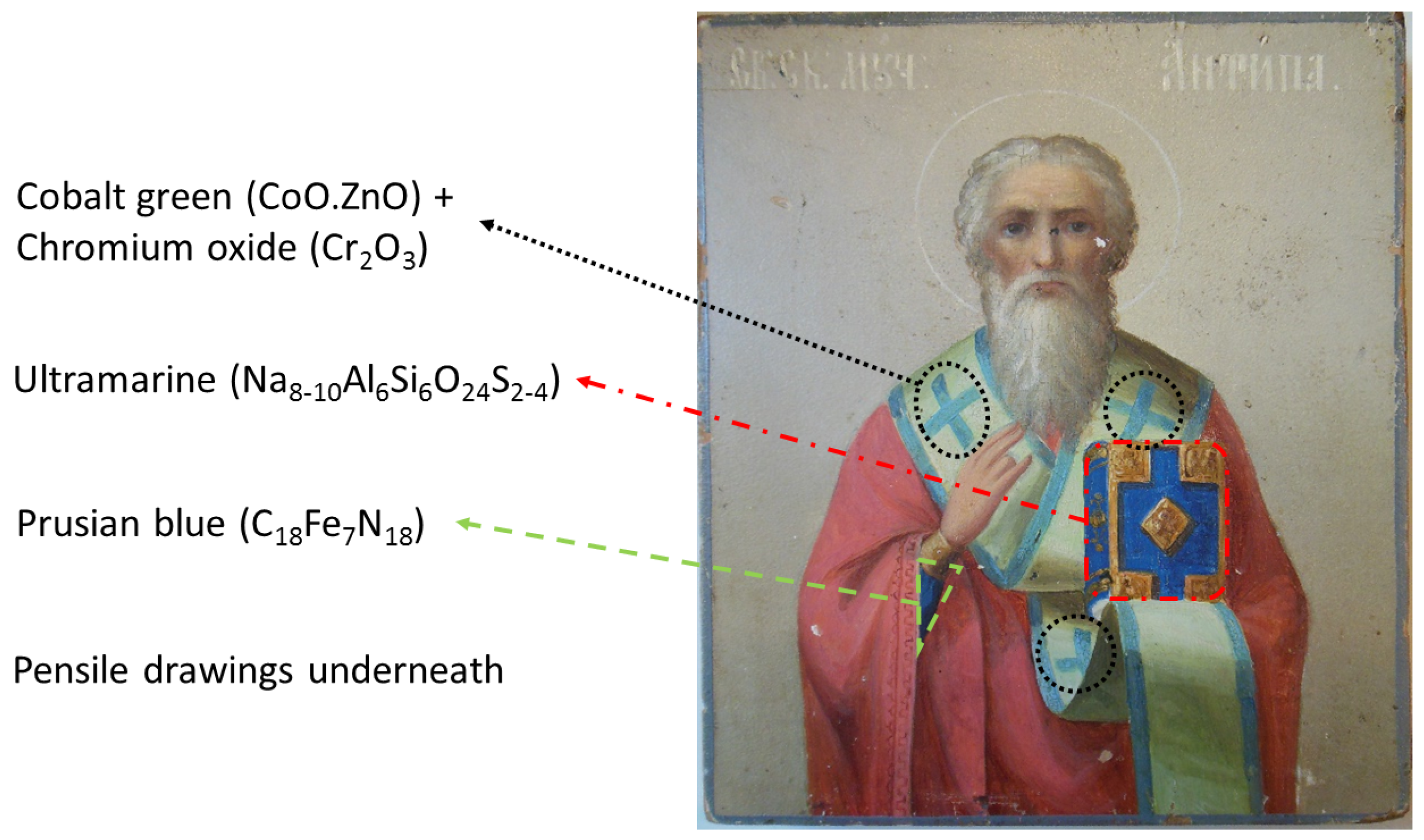
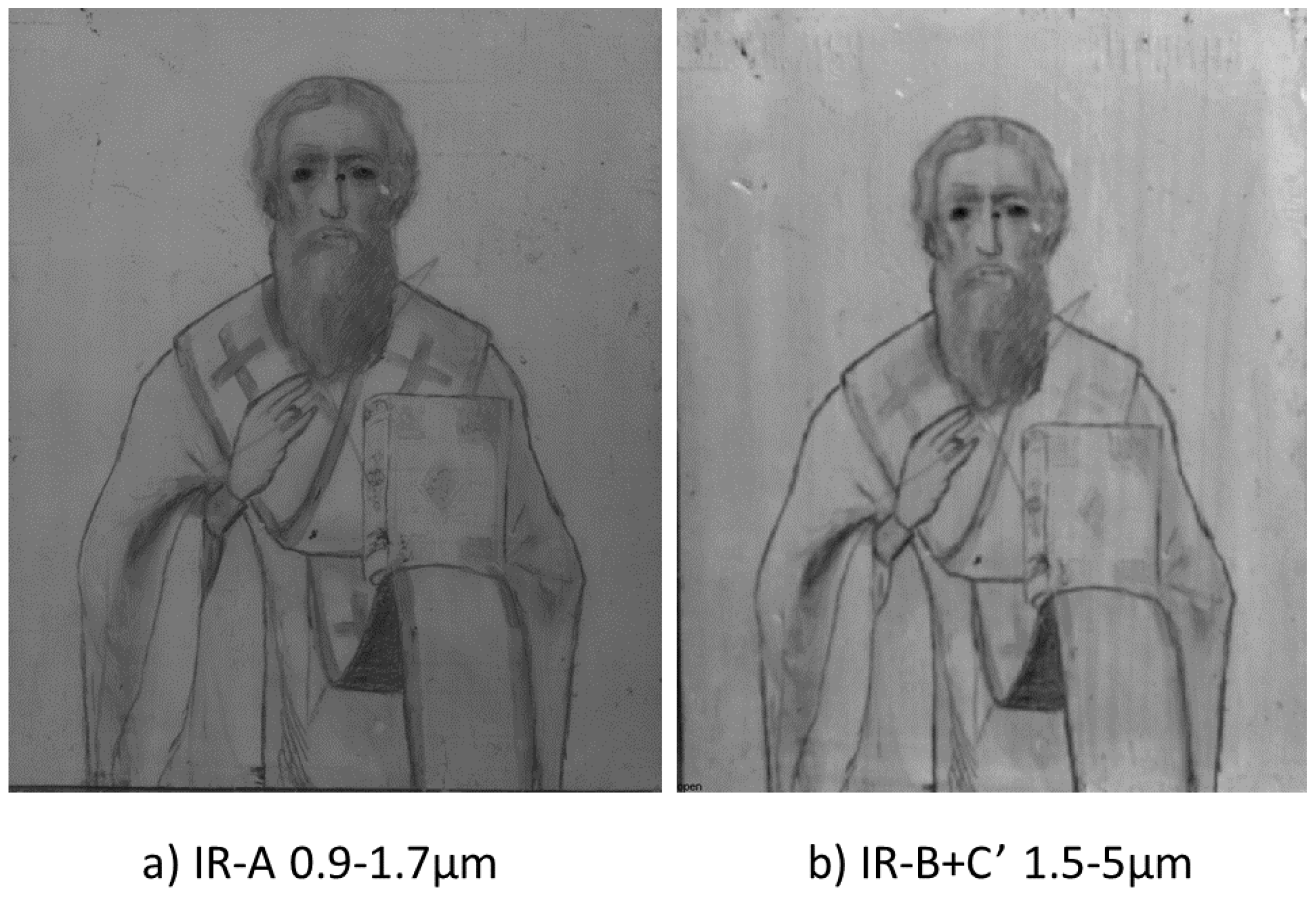

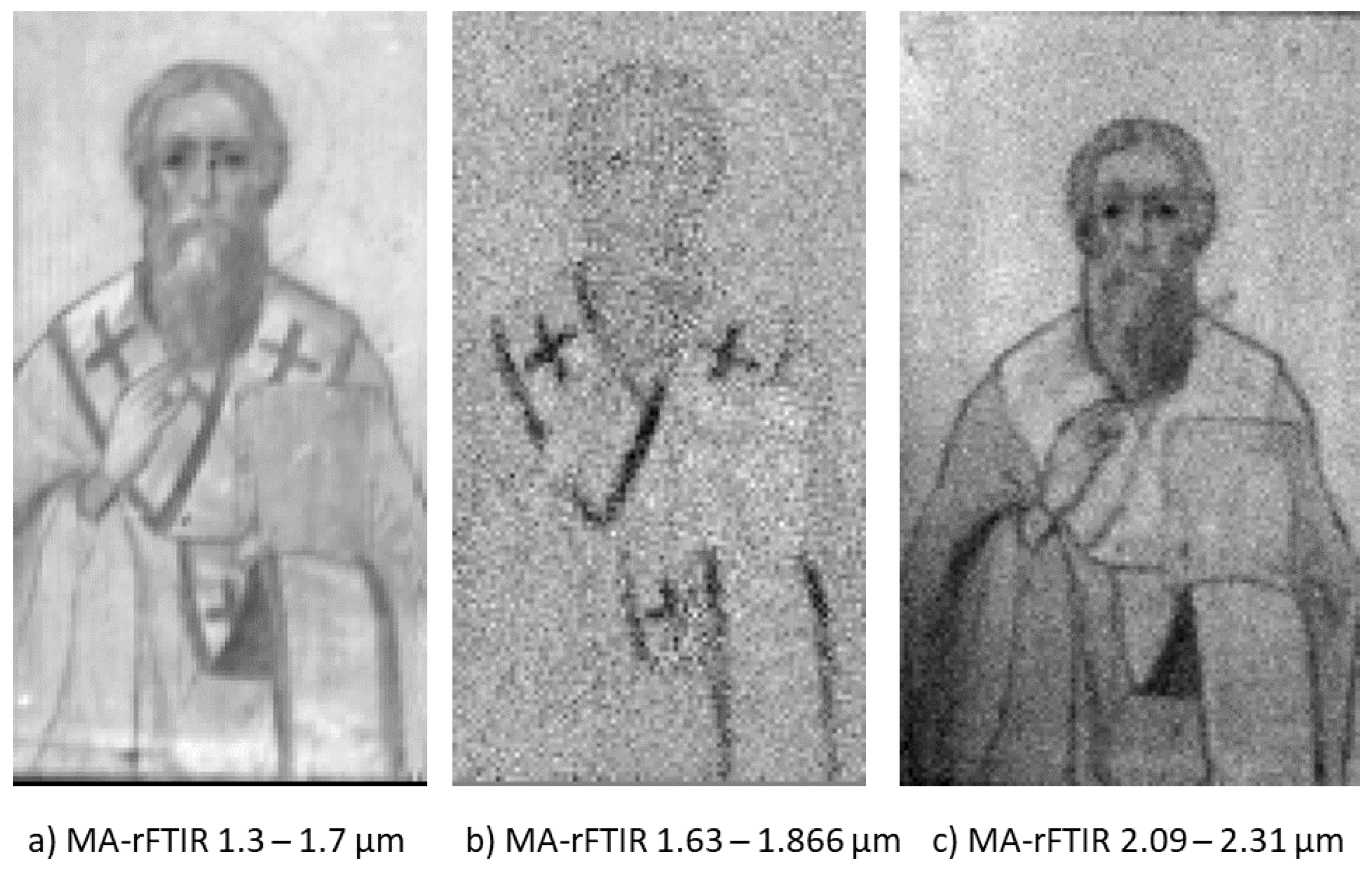

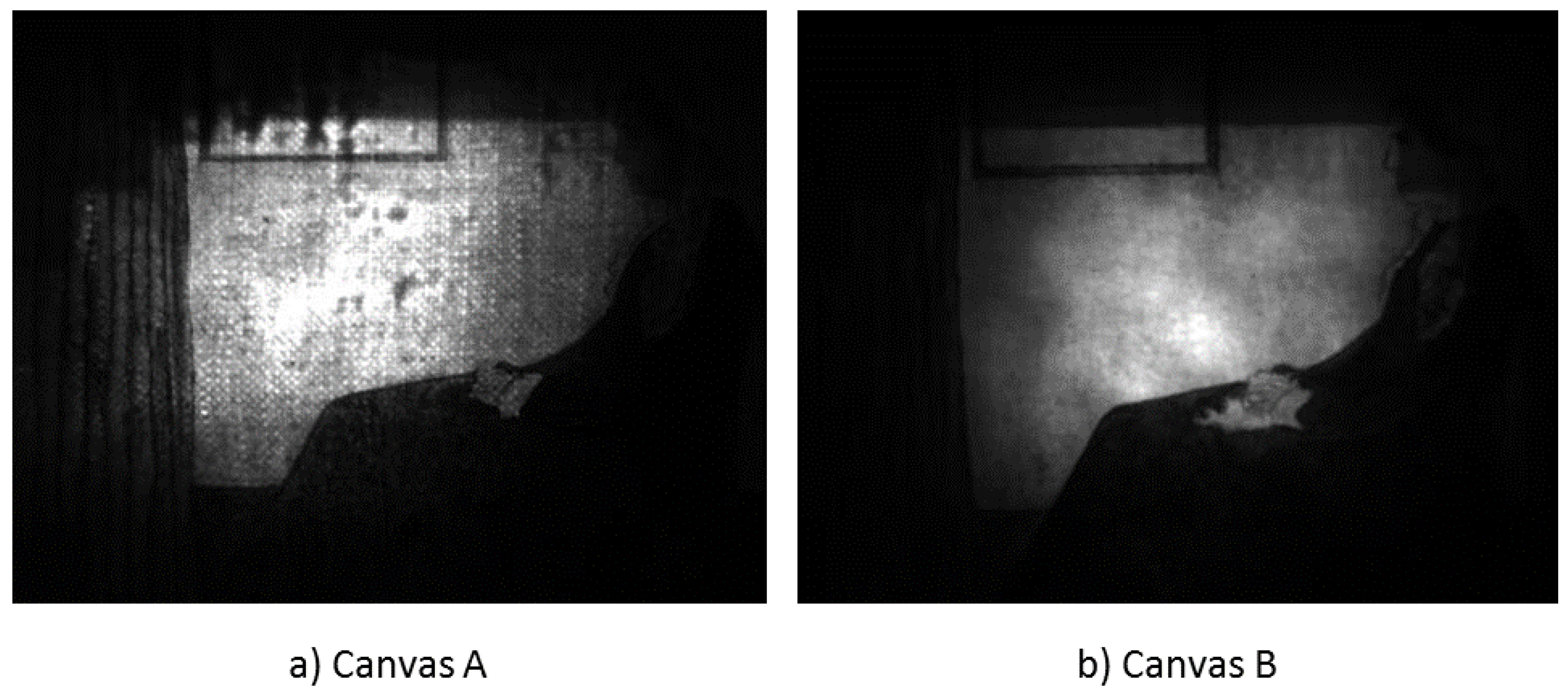
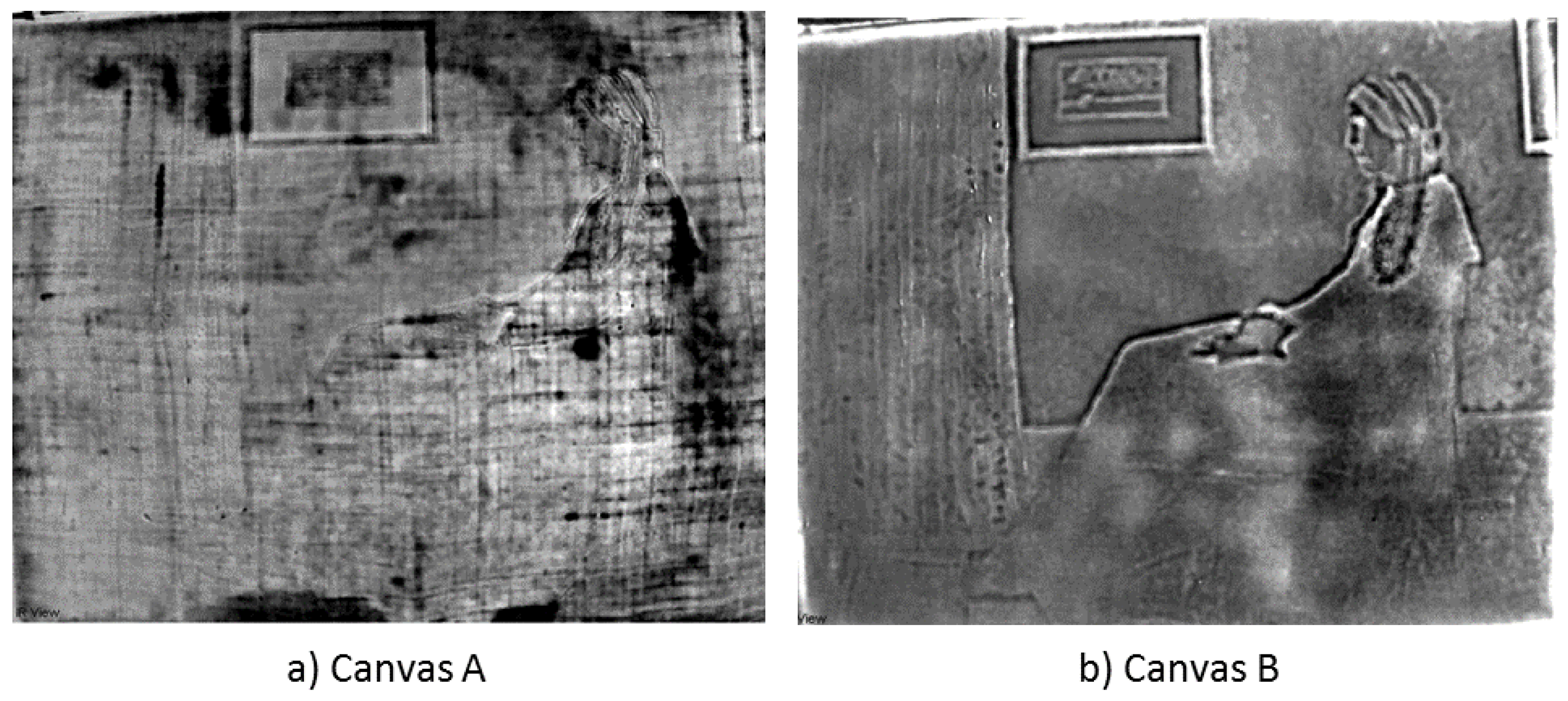



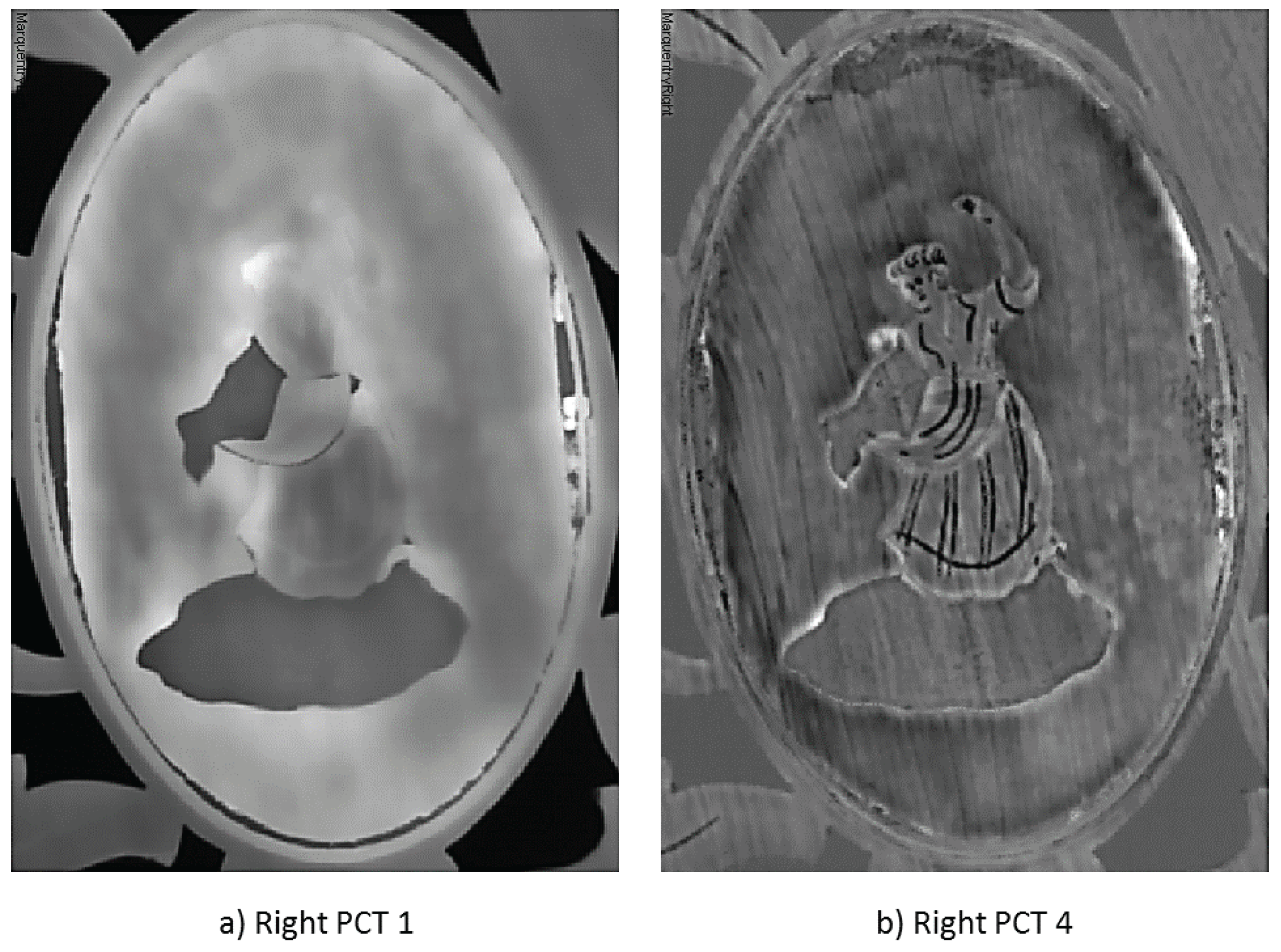
| CIE Abbreviation | Wavelength | Spectral Response Abbreviation | Wavelength | Method |
|---|---|---|---|---|
| IR-A | 0.7–1.4 | Near-infrared (NIR) | 0.7–1.0 | Reflectography |
| IR-B | 1.4–3.0 | Short-wave infrared (SWIR) | 1.0–3 | Reflectography |
| IR-C’ | 3.0–5.0 | Mid-wave infrared (MWIR) | 3.0–5.0 | Active thermography |
| IR-C” | 7.0–1000 | Long-wave infrared (LWIR) | 7.0–14 | Active thermography |
| Test Sample | Method | Excitation Source | Camera |
|---|---|---|---|
| Mondrian | IR-A reflectography | halogen | Goodrich |
| Mondrian | IR-B reflectography | halogen | FLIR X6540sc 2.2 filter |
| Mondrian | IR-B+C’ active thermography | halogen | FLIR X6540sc |
| Mondrian | IR-C’ active thermography | Xenon flash | FLIR Phoenix |
| Icon | IR-A reflectography | halogen | Goodrich |
| Icon | IR-B reflectography | halogen | FLIR X6540sc all filters |
| Icon | IR-B+C’ active thermography | Xenon flash | FLIR X6540sc |
| Icon | MA-rFTIR | Global IR source | Bruker Alpha spectrometer |
| Whistler | IR-A reflectography | IR LED | Goodrich |
| Whistler | IR-B+C’ active thermography | halogen | FLIR X6540sc |
| Whistler | IR-C’ active thermography | Xenon flash | FLIR Phoenix |
| Marquetries | IR-A reflectography | IR LED | Goodrich |
| Marquetries | IR-B+C’ active thermography | Xenon flash | FLIR X6540sc |
| Marquetries | IR-C’ active thermography | Xenon flash | FLIR Phoenix |
© 2018 by the authors. Licensee MDPI, Basel, Switzerland. This article is an open access article distributed under the terms and conditions of the Creative Commons Attribution (CC BY) license (http://creativecommons.org/licenses/by/4.0/).
Share and Cite
Peeters, J.; Steenackers, G.; Sfarra, S.; Legrand, S.; Ibarra-Castanedo, C.; Janssens, K.; Van der Snickt, G. IR Reflectography and Active Thermography on Artworks: The Added Value of the 1.5–3 µm Band. Appl. Sci. 2018, 8, 50. https://doi.org/10.3390/app8010050
Peeters J, Steenackers G, Sfarra S, Legrand S, Ibarra-Castanedo C, Janssens K, Van der Snickt G. IR Reflectography and Active Thermography on Artworks: The Added Value of the 1.5–3 µm Band. Applied Sciences. 2018; 8(1):50. https://doi.org/10.3390/app8010050
Chicago/Turabian StylePeeters, Jeroen, Gunther Steenackers, Stefano Sfarra, Stijn Legrand, Clemente Ibarra-Castanedo, Koen Janssens, and Geert Van der Snickt. 2018. "IR Reflectography and Active Thermography on Artworks: The Added Value of the 1.5–3 µm Band" Applied Sciences 8, no. 1: 50. https://doi.org/10.3390/app8010050







